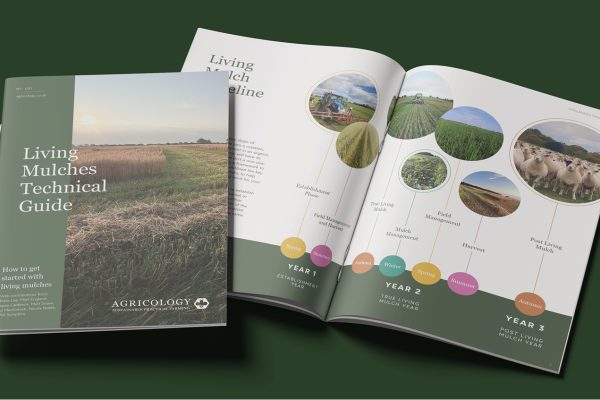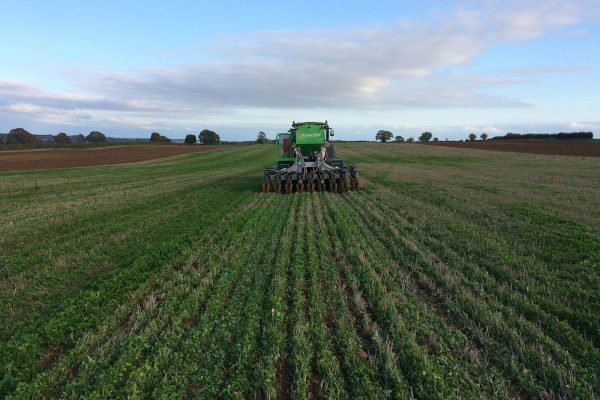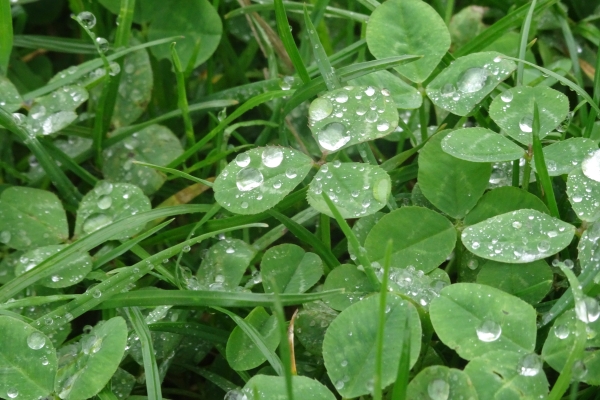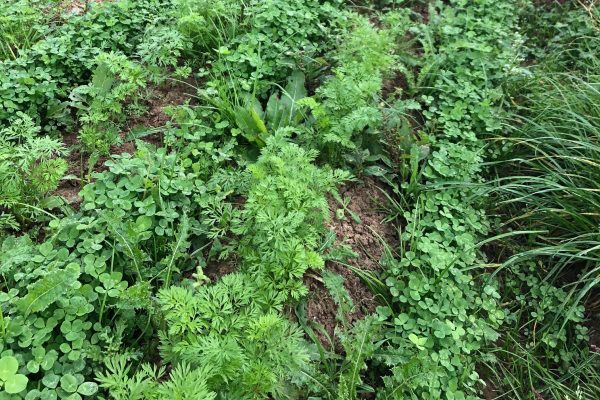Living Mulches – Technical Guide – video
Resource explained
Matt England, the Estate Manager of Fring Estate in North Norfolk, talks us through his journey of trialling living mulches (over the course of three years), and all the key learnings, observations and reflections that have come from it. This brings the Agricology Technical Guide to life, which was co-created in response to farmers’ questions. It’s a free guide building on four years of research conducted through an Innovative Farmers Field Lab, further studies by the Organic Research Centre, and insights from UK farmers who have trialled living mulches, featuring a diary with Matt England. It is designed to offer clarity and step-by-step guidance on effectively adopting this innovative practice.
Findings & recommendations
- Living mulches are semi-permanent legume understories sown beneath cereal crops in the first year. By the second year, once the cover crop mulch is well established, new crops are direct drilled into it. This method integrates key regenerative agriculture practices, combining elements of intercropping, cover cropping, mulching, and undersowing to enhance soil health and improve biodiversity. When successfully managed, living mulches help reduce external inputs, improve soil fertility, suppress weeds, and increase resilience in arable rotations.
- Living mulches aren’t without their challenges but Matt believes they have real potential.
- Cereal selection, seed rates and the establishment of that cereal is key. Getting the fertility right in the spring (for the cereal in the ‘true living mulch year’) is fundamental to making it work. If you get all of those things right, it gives the crop the best opportunity to out-compete the living mulch.
- If you can make the system work without a yield penalty, it makes it viable to build into a whole farm systems approach.









